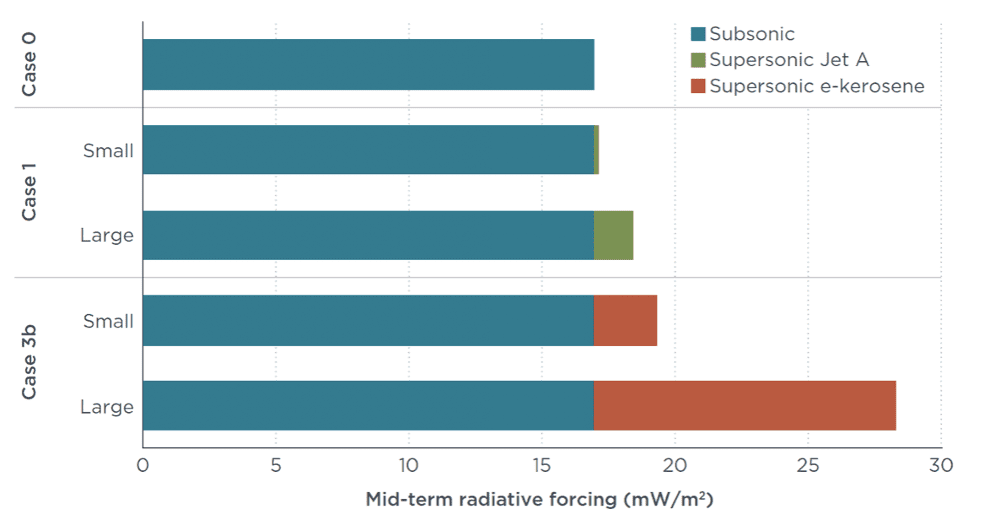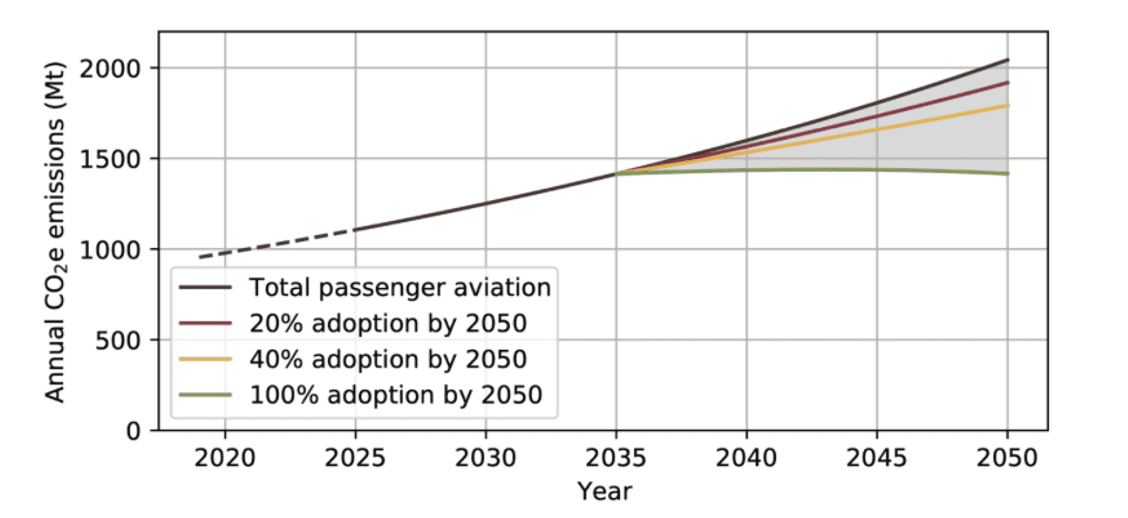Performance analysis of evolutionary hydrogen-powered aircraft
Blog
Place your bets: supersonics, or zero-emission planes?
A colleague of mine from the aviation industry once observed that, given the tens of billions of dollars needed to launch a new aircraft program, developing next-generation aircraft is much like a game of high-stakes roulette. Each company gets a single outside bet, on black or red, this technology or that one. Even money, or lose it all—those are the stakes.
Today, with an accelerating climate crisis and growing public concern about aviation emissions, governments need to place smart bets as well. Officials are meeting now in Montreal under the auspices of the International Civil Aviation Organization (ICAO), to decide which aircraft types deserve policy support. They will discuss standards—for noise, air pollution, and carbon dioxide (CO2)—for various aircraft types, over the next three years. Without international standards, which provide certainty that an aircraft can be flown anywhere in the world, companies are reluctant to sink money into developing new aircraft.
Supersonic startups like Boom, supported by the US government, are pushing for the ICAO to set supportive standards for supersonic aircraft. US support for supersonic development started under the Trump administration thanks to advocacy from conservative think tanks. It broadened over time to include a push for supportive international standards, R&D support for low-boom aircraft development, and defense contracts for supersonic development. The Biden administration has pivoted back to environmental issues, recommending that ICAO update its creaky standards for subsonic aircraft. But like three years ago, this meeting pits US support for supersonics against European, airport, and civil society interest in lower emissions.
Normally, I’d applaud industry for asking to be regulated. But even a regulated SST will be louder, and emit more air and climate pollution per passenger, than new subsonic planes. Flying faster than the speed of sound is inherently energy-intensive, in part because supersonics use powerful, thirsty engines to produce the high thrust needed to break the sound barrier. This means high fuel burn—up to 10x more fuel per passenger compared to subsonics—and a disproportionate impact on the climate. So, even a standard that improves supersonics will likely end up increasing pollution overall.
Meanwhile, airlines are under pressure from consumers to slash emissions. Airlines have pledged net-zero aviation by 2050 and issued a series of technology roadmaps to support their promise. Major proponents of supersonics, notably Boom Supersonic and United Airlines, argue that low-carbon sustainable aviation fuels (SAFs) can throttle back supersonic emissions. SAFs can be used in today’s engines and aircraft at up to 50% blends and are energy-dense enough to power long-haul and high-speed flights. But SAF remains scarce (~0.05% of all jet fuel in 2020), and are controversial when produced from crops linked to tropical deforestation.
Moreover, SAFs are expensive, and they threaten the already shaky finances of supersonics. A recent study by the ICCT and MIT’s Laboratory for Aviation and the Environment (LAE) found that after accounting for their fuel intensity (7 to 9 times greater than subsonics per seat-km) and high cost (at least 3 times more than Jet A), operating SSTs on SAFs would increase fuel costs by about 25 times compared to today’s aircraft using today’s fuels. As a result, our model predicts zero profitable market for supersonics burning SAFs under most conditions.
More surprising, we find that even if SAFs were sourced as cheaply as fossil Jet A, their use in SSTs could actually backfire. That’s because supersonics fly high in the stratosphere where emissions linger, and burning a low-sulfur, low CO2 SAF would unmask the warming of pollutants like nitrogen oxides and water vapor. High fidelity atmospheric modeling concludes that even a limited number of SST operations using synthetic “e-kerosene” could increase the medium-term climate impacts of commercial aviation by two-thirds. (Figure 1, top and bottom bars). That’s despite accounting for less than 1% of seat kilometers in 2035.

Figure 1. Fleetwide medium-term radiative forcing by case and SST
Our research calls into question the bold claims made by proponents of supersonics about the sustainability of their designs and their compatibility with net-zero aviation. Notably, none of the net-zero roadmaps mentioned above included SSTs. Only Waypoint 2050, IATA’s global roadmap, explains why supersonics weren’t modeled, calling them “niche” and waving away their excess emissions with emission standards they can’t possibly meet.
So let’s call investments in supersonic aircraft red (maybe better, flashing red). Black, in our roulette analogy, is zero-emission planes (ZEPs) powered by hydrogen and, for the shortest flights, batteries. Our first detailed analysis of ZEPs published last month focused on evolutionary hydrogen-powered aircraft such as those being considered under Airbus’s ZEROe program.
The study expressed cautious optimism that hydrogen-powered aircraft are viable from a design perspective. They could address up to one-third of passenger aviation emissions starting in 2035 with near-zero emissions if deployed on all feasible routes and powered by hydrogen generated using additional renewable electricity (Figure 2, green line). A more cautious rollout starting in 2035 could address 6 to 12% of passenger emissions by 2050 (yellow and red lines).

Figure 2. CO2e emissions from passenger aviation under various scenarios of adoption of LH2-powered aircraft, 2020 to 2050
Hydrogen aircraft won’t be perfect—their bulky cryogenic fuel tanks make them less energy efficient and give them less range compared to conventional aircraft—but they could power flights up to 3400 km at lower fuel costs than synthetic “e-fuels”.
If red is for supersonic aircraft and black is for zero-emission planes, the question for governments is this: Which will you bet on? Our recommendation is to prioritize aircraft and fuels that are inherently low-carbon—not highly polluting supersonics. ICAO should develop standards to optimize wing-and-tube subsonic aircraft, and prepare the groundwork for ZEPs, rather than enabling a technology that doesn’t fit in a climate constrained world. Governments can focus on promoting the highest-quality SAFs and targeting them to best uses, notably long-haul flights that won’t be easily fueled by hydrogen. And United, may I suggest kicking supersonics to the curb and instead doubling down on your hydrogen and electric aircraft investments?
The earth is warming, the wheel has been spun, and the croupier is about to close off bets. Who’s ready to place an intelligent wager?
